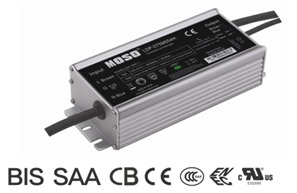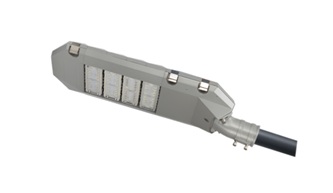1. According to the principle of Transducer, there are mainly two categories of dynamic and dynamic earphones. Although there are several types such as magnetic type other than these two types, they have been eliminated or It is used for professional purposes with very little market share and will not be discussed here.
The principle of moving coil headphones: At present, most (about 99% or more) earphone earplugs belong to this category. The principle is similar to ordinary speakers. The coil in the permanent magnetic field is connected to the diaphragm. The coil drives the diaphragm to sound under the drive of the signal current. Electrostatic earphones: The diaphragm is in a changing electric field. The diaphragm is extremely thin and accurate to a few micrometers (at present, STAX's new generation of electrostatic earphone diaphragm has been accurate to 1.35 micrometers). The coil drives the diaphragm to sound under the drive of electric field force.
2. According to the degree of openness, it is mainly open, semi-open and closed (closed).
(1) Open type: Generally speaking, it is natural to hear, comfortable to wear, and is commonly used in HIFI headphones that are appreciated at home. The sound can be leaked, otherwise the sound of the outside world can also be heard, and the headphones exert less pressure on the ears.
(2) Semi-open type: There are no strict regulations, and the sound can only be in or out, and can be adjusted accordingly.
(3) Closed type: The earmuffs exert a heavy pressure on the ears to prevent the sound from coming in and out, and the sound is positioned correctly and clearly. This type is common in the field of professional monitoring. However, this type of headphones has a disadvantage that the bass sound is seriously stained, and the W100 is an obvious one. example of.
3. According to usage, it is mainly used for home, portable, monitor, mix, and binaural recording.
2. Related parameters of headphones
Impedance
Note the difference from the meaning of resistance. In the world of direct current (DC), the effect of objects on current blocking is called resistance, but in the field of alternating current (AC), in addition to resistance blocking current, capacitance and inductance also blocking current. Flow, this effect is called reactance, and the impedance we call everyday is the sum of resistance and reactance in the vector.
Sensitivity (SensiTIvity)
The sound pressure level that the earphone can emit when the power input to the earphone is 1 milliwatt (the unit of sound pressure is decibel, the greater the sound pressure, the greater the volume), so the higher the sensitivity and the lower the impedance, the easier the earphone to produce sound. The easier it is to drive.
Frequency Response (Frequency Response)
The sensitivity value corresponding to the frequency is the frequency response, and the image is the frequency response curve. The range that human hearing can reach is about 20Hz-20000Hz. At present, the mature earphone technology has reached this requirement.
3. Terminology of sound quality evaluation
Pitch range: the range between the highest and lowest notes that an instrument or vocal can achieve.
Timbre: also known as timbre, one of the basic attributes of sound, such as erhu and pipa are different timbre
Sound dyeing: the opposite of the natural neutrality of music, that is, the sound is dyed with some characteristics that the program itself does not have. For example, the kind of sound obtained by speaking into a jar is a typical sound dyeing. The sound stain indicates that some components are added (or reduced) in the reproduced signal, which is obviously a distortion.
Distortion: The output of the device cannot fully reproduce its input, resulting in distortion of the waveform or increase or decrease of the signal components.
Dynamic: Allows to record the ratio of the largest information to the smallest information.
Transient response: the ability of equipment to follow the sudden signal in music. The equipment with good transient response should respond immediately as soon as the signal comes, and stop suddenly when the signal stops. (Typical musical instrument: piano)
Signal-to-noise ratio: Also known as the signal-to-noise ratio, the useful component of the signal and the strength of the noise are often expressed in decibels. The higher the signal-to-noise ratio of the device, the less noise it produces.
Sense of air: Acoustic term used to indicate the openness of high-pitched sounds, or the spatial separation between musical instruments in the sound field. At this time, the high frequency response can be extended to 15kHz-20kHz. Antonyms include "dull" and "thick".
Low frequency extension: refers to the lowest frequency that audio equipment can reproduce. It is a scale used to determine the degree to which the sound system or speakers can dive when playing back bass. For example, the low frequency of small subwoofers can be extended to 40Hz, while large subwoofers dive to 16Hz.
Bright: refers to highlighting the high frequency band of 4kHz-8kHz, at this time the harmonics are relatively stronger than the fundamental wave. Brightness itself is not a problem. The live concerts all have bright sounds. The problem is that the brightness is well-controlled. Too bright (even howling) is annoying.
4. Relevant knowledge about amplifiers
1. General amplifiers can be divided into two types: transistor (stone machine) and tube (tube amplifier) ​​amplifiers
2. Amplifier: The general term for preamplifier and power amplifier.
(1) Power amplifier: referred to as power amplifier, an electronic device used to enhance the signal power to drive the sound of the speaker. Power amplifiers without auxiliary functions such as signal source selection and volume control are called post-stage.
(2) Pre-amplifier: The pre-amplification and control part before the power amplifier is used to enhance the voltage amplitude of the signal, provide input signal selection, tone adjustment and volume control functions. The preamplifier is also called the pre-stage.
3. Class-A amplification: also known as Class-A amplification. It is a working state of the amplifier. At this time, the transistor or tube amplifier will amplify the entire audio signal.
Class B amplification (class-B): also known as class B amplification. It is a working state of the amplifier. At this time, one transistor or tube amplifier will amplify the positive half of the audio signal, while the other transistor or tube amplifier will amplify the negative half of the signal.
Class AB (Class AB): also known as Class AB amplification. A working state of the amplifier. At this time, the output stage of the amplifier will be in Class A amplification when the output power is low, and will be converted to Class B amplification when the output power is high.
4. About the earphone wire: Most earphone wires use copper as the raw material, and the general purity (generally expressed by a few N, such as 4N, 6N ...) The higher the conductivity, the better the signal distortion, the less the signal distortion.
TPC (Electrolytic Copper): 99.5% purity
OFC (oxygen-free copper): purity 99.995%
LC-OFC (linear crystalline oxygen-free copper or crystalline oxygen-free copper): purity above 99.995%
OCC (Single Crystal Oxygen-Free Copper): The highest purity, above 99.996%, is divided into PC-OCC and UP-OCC
5. About front-end equipment: Many HIFI enthusiasts are used to separating the turntable into two parts: turntable and decoder to get better sound quality music.
Front-end: A signal source in a multi-finger audio system, such as an LP compact turntable or a CD player, and sometimes a front stage in a tuner (radio head) that processes signals received wirelessly.
CD turntable: A machine that separates the mechanical transmission part of a CD player.
D / A converter: A device that converts digital audio signals into analog audio signals in digital audio products (such as CDs and DVDs). The D / A converter can be made into an independent machine to match the CD turntable, which is often called a decoder (DAC).
MOSO dimmable LED Driver is designed for various types of exterior or industrial LED lighting, including LED roadway lighting, LED street lighting, LED flood lighting, LED highbay lighting, LED high mast lighting, LED architecture lighting, etc. The driver is compliant to all 0~10V and PWM dimming controllers, dimming systems, and smart control systems.
All dimmable LED Drivers comes with compact size and IP67 protection. So the same driver can be used for independent or built-in a waterproof power supply chamber. There is no limitation of the IP rating of the luminaire housing.


The ProgrDimmable LED Driver operates in constant current model. There are two types dimmable LED drivers available in MOSO: 1) Programmable Dimmable LED Driver, or constant current dimmable LED driver.
A programmable dimmable LED driver can be monitored by an infrared-based programming device, to deliver different output current and voltage values to LED modules. With one driver, you can use it for different light fixture designs. The fully programmed drivers offer all dimming options (0-10V/PWM/Timing
control/DALI) and a wide range of output current in a single driver, which
deliver maximum flexibility with customized operating settings and intelligent
control options for lighting manufacturers. The Programmable dimmable LED drivers obtained many global safety certifications,
including UL, CE, TUV, ENEC, CB, SAA, BIS, KC, etc, they are compatible with the safety regulations
in different countries.
A constant current dimmable LED driver will only deliver fixed output current, you are not able to change the Iout like a programmable driver. The driver is competible with 0-10V / PWM / DALI dimming prootcols.
The compact metal case and high efficiency enables the power supply to operating with high reliability, and extending product lifetime to at least 50,000 hours. Overall protection is provided against lightening surge, output over voltage, short circuit, and over temperature, to ensure low failure rate.
MOSO grants the product with 5 years global warranty. Customer can refer to Warranty policy, find the closest MOSO distributors or sales representatives, to get a local replacement in case of any failure.
Dimmable LED Driver
Dimmable LED Driver,Dimmable LED Lighting Driver,Dimmable Slim LED Driver,Dimmable Tunnel Light LED Driver
Moso Electronics , https://www.mosoleddriver.com